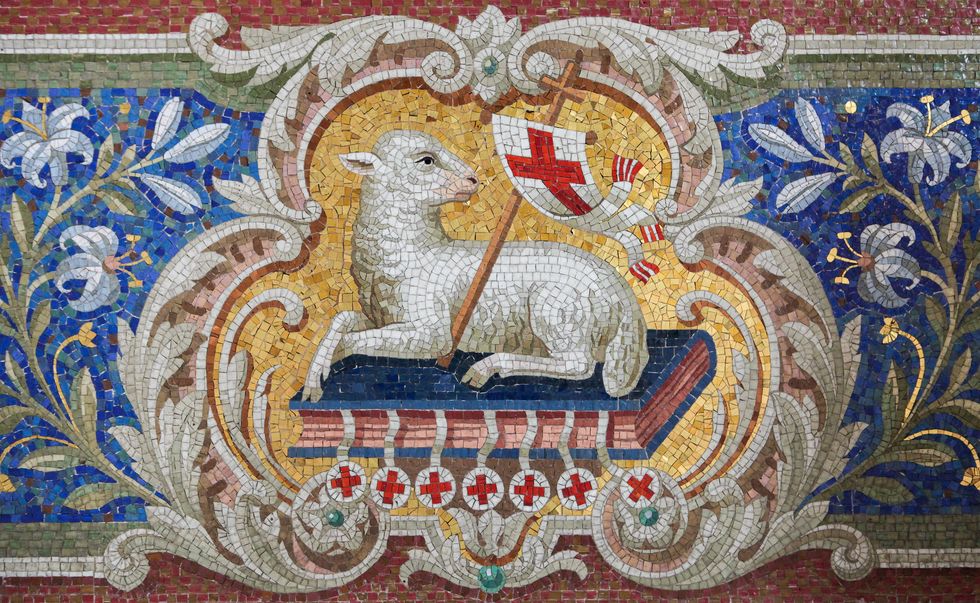
The Gospel of John can be seen as a “New Book of Exodus,” emphasizing Jesus’ ministry and its profound connection to the Passover. While the synoptic Gospels highlight the Passover meal at the Last Supper to frame Jesus’ crucifixion, John’s Gospel uniquely ties Jesus’ death and mission to the themes of Passover and the Exodus.
These eight points illustrate how John presents Jesus as the true Passover lamb and the fulfillment of the Exodus story.
1. Barabbas and the cross as a vicarious sacrifice
All four Gospels link Jesus’ death with the sparing of Barabbas, but John presents this act with deeper theological implications. Barabbas, whose name means “son of the father,” was spared execution, while Jesus, the true Son of the Father, took His place on the cross. This exchange vividly portrays the cross as a vicarious sacrifice of atonement.
The sparing of Barabbas parallels the Passover, where the blood of a lamb on the doorposts caused the angel of death to pass over the firstborn sons of Israel.
Just as Barabbas was spared through Jesus’ substitutionary death, humanity is spared from judgment through the atoning sacrifice of Christ.
2. The centrality of Passover in John’s Gospel
John’s Gospel emphasizes the Passover more than any other New Testament book, mentioning it repeatedly to frame Jesus’ ministry and mission. Passover is referred to in John 2:13, 2:23, 5:1, 6:4, 11:55, and 13:1. These mentions underscore the centrality of Passover to understanding Jesus as the fulfillment of its themes.
For instance, John 6:4 introduces the feeding of the 5,000 within Passover, foreshadowing Jesus as the true bread of life, whose flesh provides eternal sustenance. Similarly, the events leading to His crucifixion are explicitly tied to Passover, reinforcing Jesus’ role as the lamb, whose sacrifice brings redemption.
3. Jesus, the lamb of God
John introduces Jesus with a profound declaration by John the Baptist: “Behold, the lamb of God, who takes away the sin of the world!” (John 1:29).
This identification of Jesus as the lamb of God ties directly to the Passover lamb, whose blood spared Israel’s firstborn in Egypt. The imagery of Jesus as the lamb is later echoed in Revelation 5, where He is worshiped as the lamb who was slain and worthy to receive power and glory.
John’s Gospel thus bridges the Old Testament Passover lamb, Jesus’ crucifixion, and the ultimate victory of the lamb in Revelation, presenting a cohesive vision of redemption.
4. His bones were not broken
John 19:31-37 notes that the soldiers did not break Jesus’ legs, fulfilling the requirement of the Passover lamb: “You shall not break any of its bones” (Exodus 12:46). This detail is unique to John and serves to confirm Jesus as the perfect Passover lamb.
The unbroken bones also symbolize Jesus’ unblemished sacrifice. Unlike the animal sacrifices of the old covenant, Jesus’ sacrifice was once for all, perfect, complete, and sufficient to atone for sin.
This fulfillment of the Passover law for John underscores Jesus’ divine purpose as the lamb of God.
5. The timing of the crucifixion and the Passover lambs
John carefully sets the timing of Jesus’ crucifixion to coincide with the slaughtering of the Passover lambs. According to John 19:14, Jesus was crucified on the Day of Preparation, just as the Passover lambs were being sacrificed.
This timing is not coincidental; it reveals the theological significance of Jesus’ death. Just as the blood of the lambs protected Israel during the first Passover, Jesus’ blood provides eternal protection and deliverance from sin.
John’s emphasis on this timing reinforces Jesus as the ultimate fulfillment of the Passover sacrifice.
6. The mention of hyssop
In John 19:29, Jesus is offered sour wine on a hyssop branch during His crucifixion. This detail carries significant Passover symbolism. In Exodus 12:22, hyssop was used to sprinkle the lamb’s blood on the doorposts, marking the homes of Israel for deliverance.
John connects Jesus’ crucifixion to the original Passover by including this detail. Just as hyssop was used to apply the lamb’s blood in Egypt, it is present at the cross, where the blood of Jesus is applied to the doorpost of the heart of believers.
This imagery underscores Jesus as the true Passover lamb, whose blood brings deliverance.
7. Eating the Passover lamb and Jesus’ zeal for God’s house
In John 2:17, Jesus is described as having a zeal for God’s house, a reference to Psalm 69:9: “Zeal for Your house will consume me” (consume is literally “eat”).
The context of this statement in John’s Gospel is cleansing the Temple, which occurs during Passover (John 2:13). This timing ties Jesus’ zeal to consuming the Passover lamb in Exodus 12.
In the original Passover, the lamb was sacrificed and eaten as a sign of covenant participation. Similarly, Jesus calls His followers to partake of His body and blood, symbolized in the Eucharist, as a means of entering into the new covenant. This connection highlights the participatory nature of redemption through Christ, the true Passover lamb.
8. The Passover reinforced by allusions to the Exodus
Throughout John’s Gospel, numerous allusions to the Exodus reinforce Jesus’ role in a new and greater deliverance. For instance:
- Water into wine (John 2:1-11): This miracle echoes Moses turning water into blood in Exodus 7:14-24, but instead of a sign of judgment, Jesus’ miracle signifies blessing and the inauguration of a new covenant.
- Jesus’ “I am” statements: Jesus repeatedly declares “I am” (e.g., John 8:58), identifying Himself with Yahweh, the God who revealed His name to Moses at the burning bush (Exodus 3:14).
- Manifesting God’s name: In John 17:6, 11-12, Jesus says He has manifested God’s name to His disciples, paralleling the Exodus theme of God revealing Himself to Israel.
- The deliverance of the Jews from Egypt through the Red Sea coincides with the Exodus of believers from sin through the sea of Jesus’ (red) blood.
Just as the Exodus revealed God as redeemer, the new Exodus through Christ reveals God as Father. The Gospel of John masterfully portrays Jesus as the fulfillment of the Passover and the Exodus.
Through vivid imagery and theological insights, John reveals Jesus as the lamb of God, the ultimate Passover sacrifice, whose blood brings deliverance and redemption. Moreover, John’s allusions to the Exodus remind us that Jesus’ mission is to deliver Israel and to inaugurate a new and greater Exodus for all humanity.
During this sacred season of remembering Jesus’ passion, let us realize that Passover is not merely an event to remember; it is a reality to live as we partake in the redemption offered through the lamb of God, who takes away the sin of the world.
This article was originally published on Joseph Mattera’s website.















